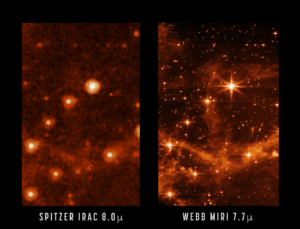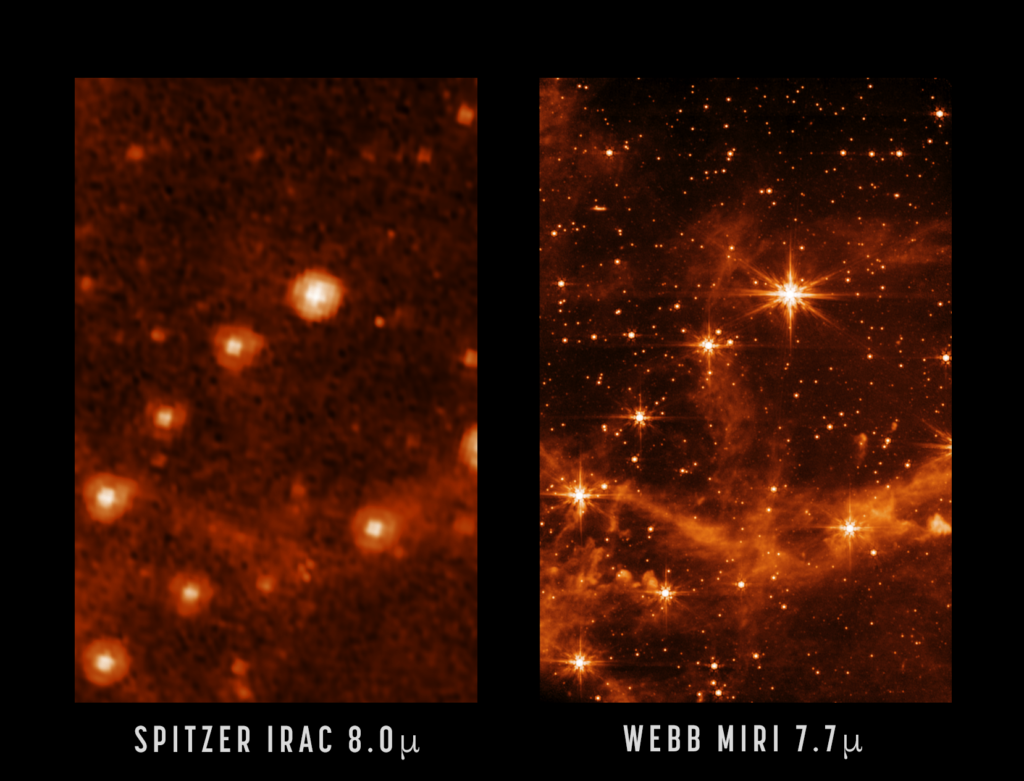
How can the James Webb Space Telescope see the past? The James Webb Space Telescope cannot really see into the past, rather it can see the light that has taken billions of years to reach us. To understand this, we need to think about the speed of light, the vast distances in the universe, the expanding universe, and the power of the James Webb Space Telescope.
The speed of light is 299,792,459 m/s, or 299,732.459 km/s, or 1,079,036,852.4 km/h. That is incredibly fast and it is the upper speed limit in our universe. That is so fast that light will travel 7.5 times around the Earth in 1 second. Our fastest jet is NASA’s X-43, which can fly at 11,854 km/h, and it can go around the Earth once in 3 hours and 24 minutes. The International Space Station takes 90 minutes. The moon is 390,000 km away and light takes 1.3 seconds to travel from the moon to Earth. It took the Apollo 11 four days, six hours and 45 minutes. So, light is very fast.
Despite light being the fastest thing in the universe, the universe is mindbogglingly enormous. There is just no way of getting our human minds around the sheer scale of the universe. However, what that means is that no matter how fast light is, it takes a staggeringly long time to get anyway. The fastest car in the world is Koenigsegg Jesko Absolut, which can do 531 km/h. Even at speeds like that, it will take seven and a half hours to drive from New York to Los Angeles. Light is like that. The sun is 147.69 million km away from us and it takes light 8 minutes and 20 seconds to travel that distance. Polaris, the North Star, is 433 light-years away, so light takes 323 years to reach Earth from Polaris.
Now, this is the first part of how telescopes can see the past. When we look at the sun, the light has taken 8 minutes and 20 seconds to reach our eyes, so we are not seeing the sun as it is now, we are seeing the sun as it was 8 minutes and 20 seconds ago. The sun could have exploded and we wouldn’t know about it for 8 minutes and 20 seconds. In the same way, light from Polaris has taken 433 years to reach us, so we are seeing it as it was 323 years ago. Polaris could also have exploded and we wouldn’t know. If you were able to warp to Polaris and look back at Earth with a powerful telescope (before you burned up) you would see Earth in 1591.
The next thing we need to think about is the expanding universe. The distance from the Earth to the sun hasn’t changed all that much in the 4.5 billion years since the Earth was formed. However, the distance from our Milky Way Galaxy to other galaxies is changing. The universe is constantly expanding, and different points are moving further away from each other constantly. That means that even though the speed of light doesn’t change, the light from far away galaxies now has further to travel before we can see it. A good analogy is baking a loaf of raisin bread. When you put the dough in the oven, all of the raisins are close together, but as the bread expands, the raisins all move away from each other. If the raisins are galaxies, light leaves raisin galaxy A, travelling at the speed of light and heads towards raisin galaxy B. As it travels, the distance between raisin galaxies A and B gradually increases, so it takes longer and longer to arrive. That is why, when we see the light from raisin galaxy A, we are seeing something that happened billions of years ago.
The James Webb Space Telescope is so powerful that it is detecting light that was emitted 13.5 billion years ago. That light has been travelling from galaxies that were created in the very early days of the universe and that light has taken 13.5 billion years to reach us. The James Webb Space Telescope uses infrared light and other light wavelengths that are outside the visible light spectrum. Infrared light waves have a longer wavelength and they are less likely to be deflected by things on the way, such as dense gas clouds. Because of that, it can see galaxies that are extremely dim.
There is far more of the universe than the James Webb Space Telescope can pick up, but we are not able to see it because the universe hasn’t existed long enough for the light to reach us. That means, there is a bubble called the “observable universe” which is everything inside that 13.5 billion year window. Everything outside, we will never be able to see in our lifetimes. And this is what I learned today.
Sources
https://www.grc.nasa.gov/www/k-12/Numbers/Math/Mathematical_Thinking/how_fast_is_the_speed.htm
https://www.livescience.com/james-webb-telescope-see-the-past
https://webbtelescope.org/contents/articles/how-does-webb-see-back-in-time
https://bigthink.com/starts-with-a-bang/fastest-spacecraft-break-speed-record
https://www.jdpower.com/cars/shopping-guides/worlds-fastest-production-cars
https://en.wikipedia.org/wiki/Polaris
Image By NASA/ESA/CSA/STScI – https://blogs.nasa.gov/webb/2022/05/09/miris-sharper-view-hints-at-new-possibilities-for-science/, Public Domain, https://commons.wikimedia.org/w/index.php?curid=117842409

